Abstract
The efficacy and toxicity of moxalactam were compared with the efficacy and toxicity of cefoxitin given with or without tobramycin to 109 patients with surgical infections. A total of 66 patients could be assessed for efficacy (33 patients in each group); 13 of the cefoxitin-treated patients also received tobramycin for at least 72 h. Most patients had intraabdominal infections; 17 had peritonitis, 14 had intraabdominal abscesses, and 7 had perforation of a gangrenous appendix. There were 15 patients with necrotizing soft-tissue infections. The predominant pathogens were members of the Enterobacteriaceae and Bacteroides fragilis. The cure rates were 79% (26 of 33 patients) for moxalactam and 88% (29 of 33 patients) for cefoxitin; the difference in cure rates was not statistically significant. In several patients, cultures of purulent intraabdominal exudates were negative, although bacteria were observed after Gram staining; this presumably reflected the potent activity of the antibiotic therapy which had been started before surgical drainage could be carried out. Adverse effects were observed in 18 of 44 assessable patients (41%) in the cefoxitin group and in 12 of 36 patients (33%) in the moxalactam group; the difference in the rates of adverse effects was not statistically significant. Our results suggest that moxalactam is similar in efficacy and toxicity to cefoxitin given with or without tobramycin for the treatment of serious surgical sepsis caused by a mixture of anaerobic and aerobic pathogens.
Full text
PDF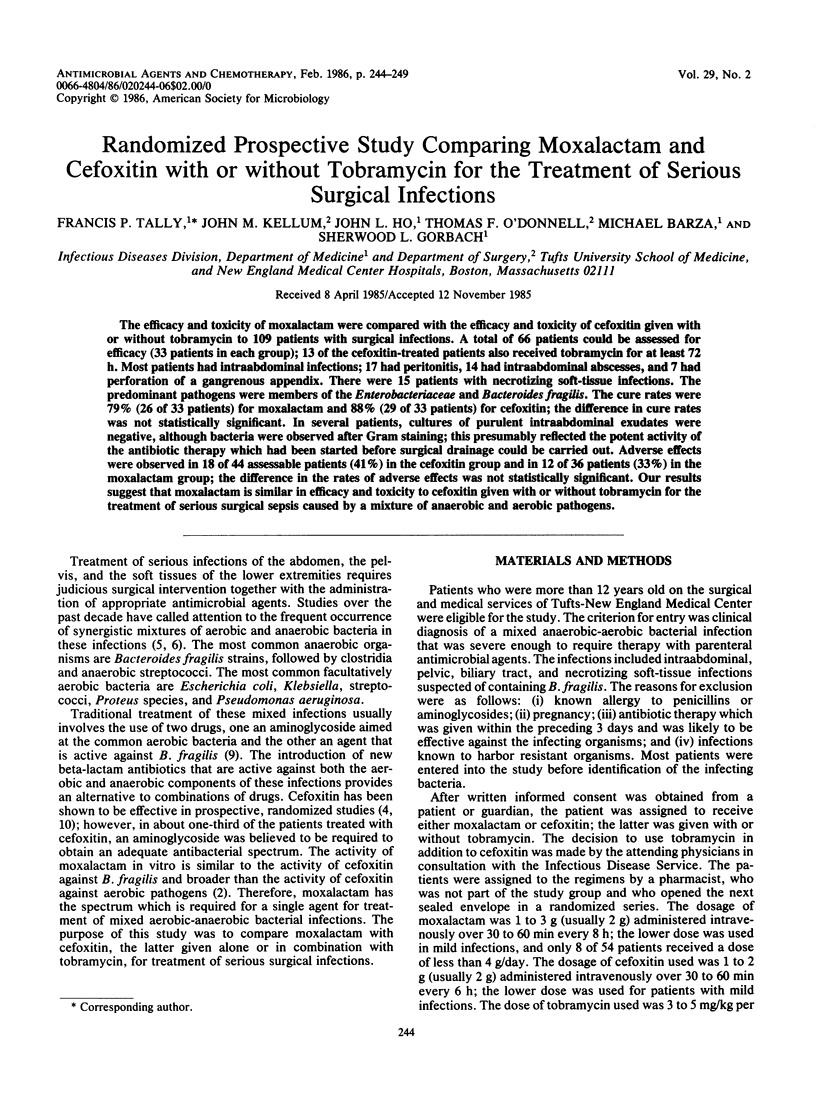
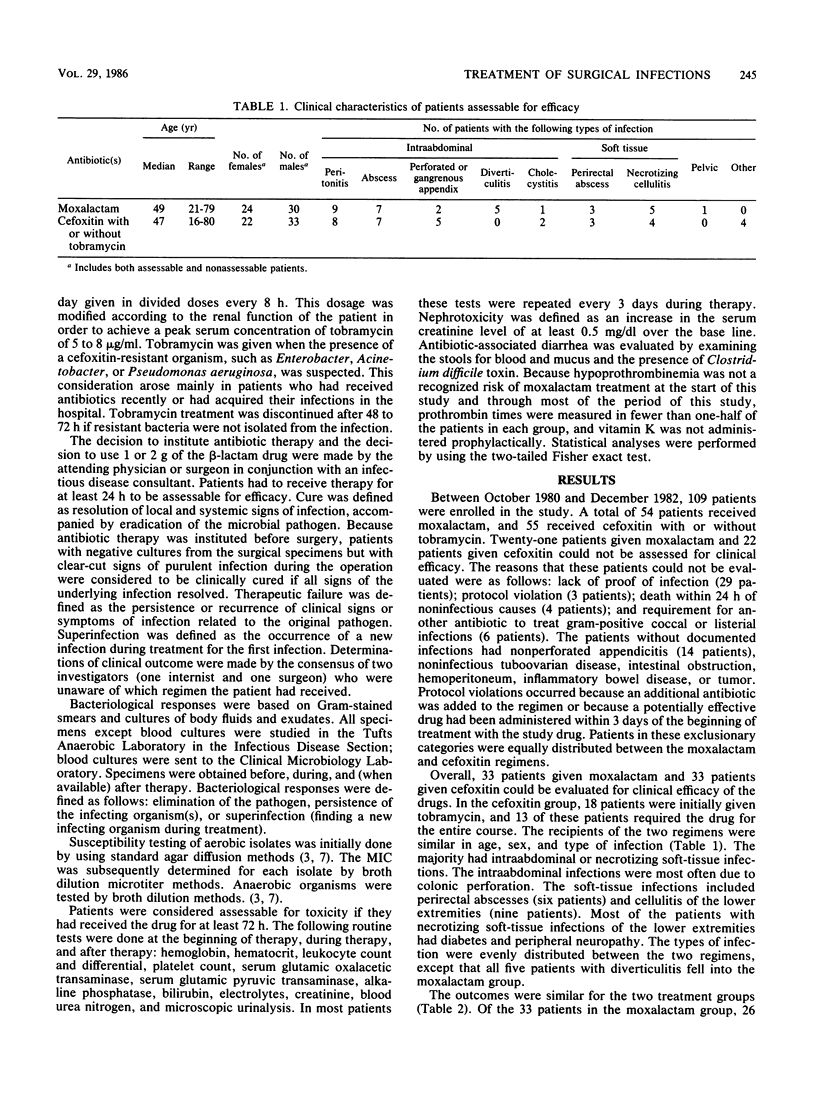
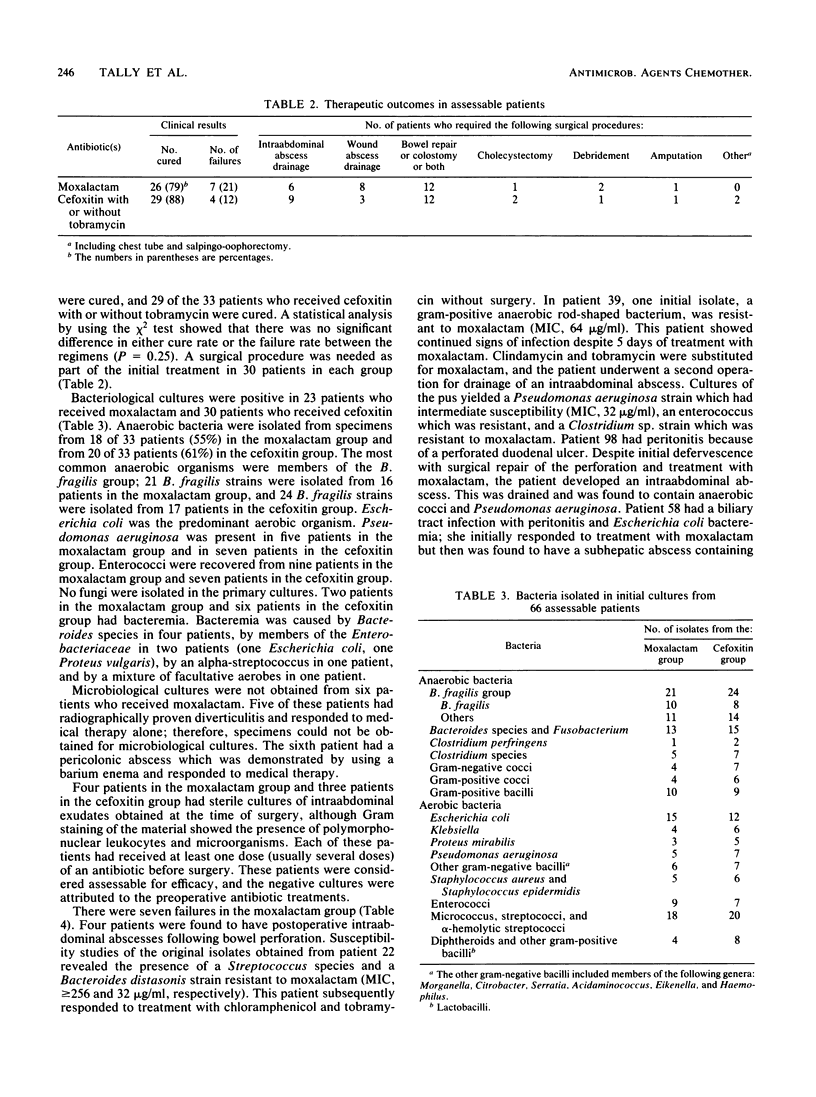
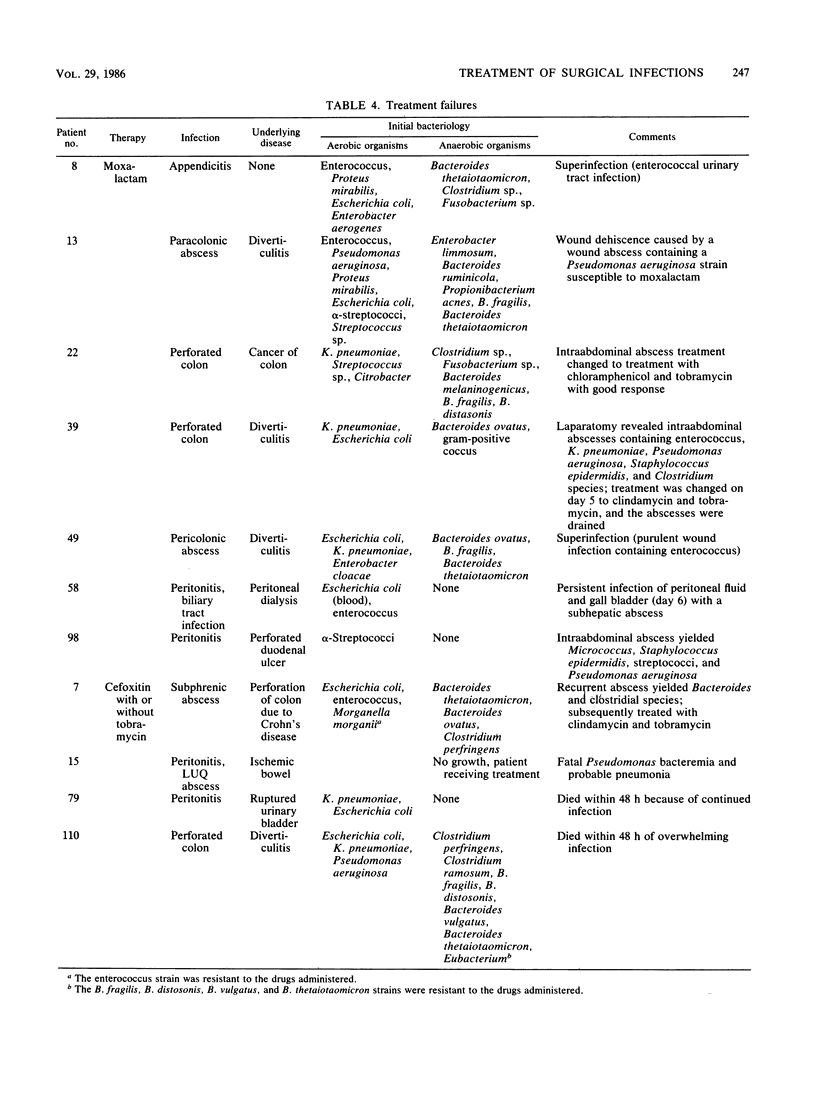
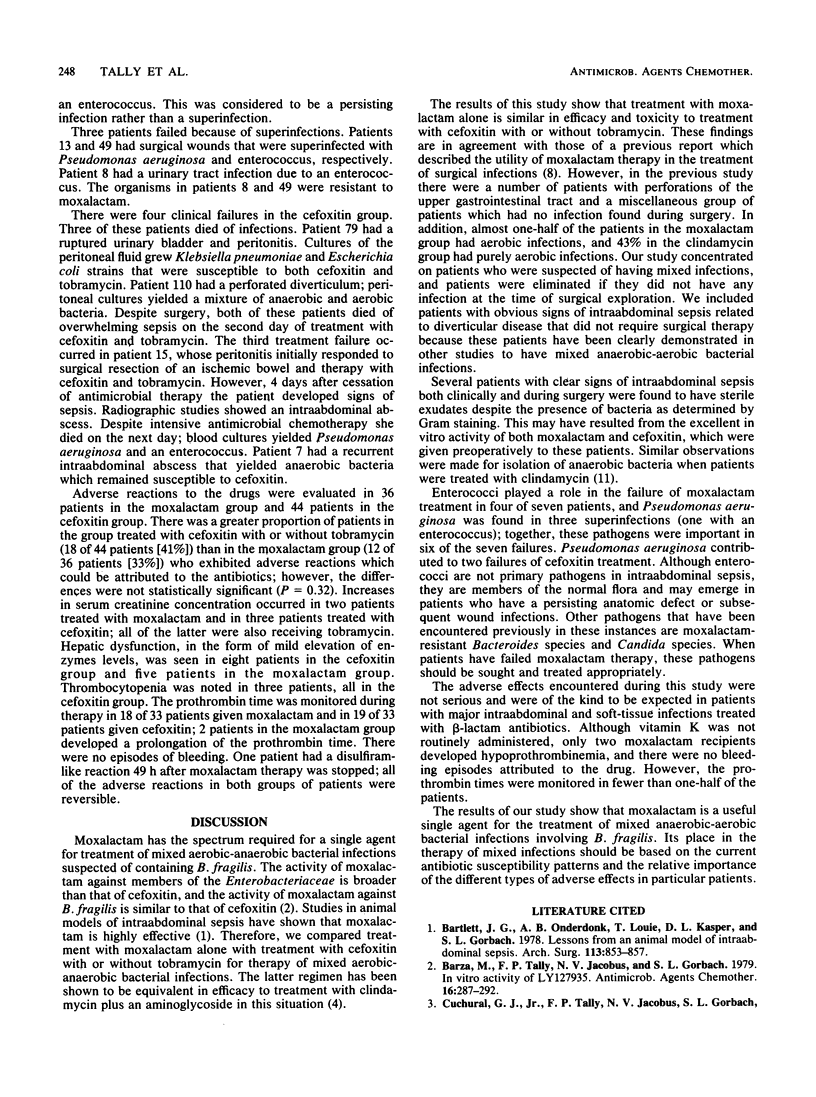
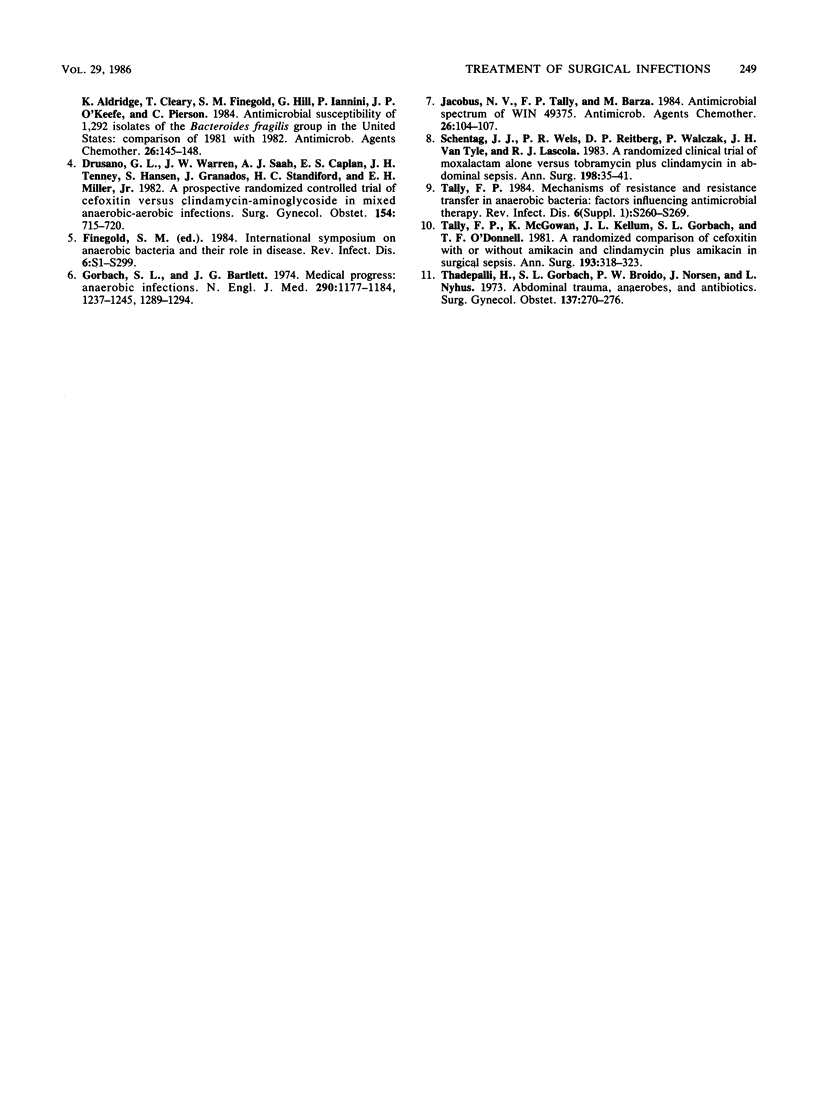
Selected References
These references are in PubMed. This may not be the complete list of references from this article.
- Bartlett J. G., Onderdonk A. B., Louie T., Kasper D. L., Gorbach S. L. A review. Lessons from an animal model of intra-abdominal sepsis. Arch Surg. 1978 Jul;113(7):853–857. doi: 10.1001/archsurg.1978.01370190075013. [DOI] [PubMed] [Google Scholar]
- Barza M., Tally F. P., Jacobus N. V., Gorbach S. L. In vitro activity of LY127935. Antimicrob Agents Chemother. 1979 Sep;16(3):287–292. doi: 10.1128/aac.16.3.287. [DOI] [PMC free article] [PubMed] [Google Scholar]
- Cuchural G. J., Jr, Tally F. P., Jacobus N. V., Gorbach S. L., Aldridge K., Cleary T., Finegold S. M., Hill G., Iannini P., O'Keefe J. P. Antimicrobial susceptibilities of 1,292 isolates of the Bacteroides fragilis group in the United States: comparison of 1981 with 1982. Antimicrob Agents Chemother. 1984 Aug;26(2):145–148. doi: 10.1128/aac.26.2.145. [DOI] [PMC free article] [PubMed] [Google Scholar]
- Drusano G. L., Warren J. W., Saah A. J., Caplan E. S., Tenney J. H., Hansen S., Granados J., Standiford H. C., Miller E. H., Jr A prospective randomized controlled trial of cefoxitin versus clindamycin-aminoglycoside in mixed anaerobic-aerobic infections. Surg Gynecol Obstet. 1982 May;154(5):715–720. [PubMed] [Google Scholar]
- Gorbach S. L., Bartlett J. G. Anaerobic infections. 1. N Engl J Med. 1974 May 23;290(21):1177–1184. doi: 10.1056/NEJM197405232902106. [DOI] [PubMed] [Google Scholar]
- Jacobus N. V., Tally F. P., Barza M. Antimicrobial spectrum of Win 49375. Antimicrob Agents Chemother. 1984 Jul;26(1):104–107. doi: 10.1128/aac.26.1.104. [DOI] [PMC free article] [PubMed] [Google Scholar]
- Schentag J. J., Wels P. B., Reitberg D. P., Walczak P., Van Tyle J. H., Lascola R. J. A randomized clinical trial of moxalactam alone versus tobramycin plus clindamycin in abdominal sepsis. Ann Surg. 1983 Jul;198(1):35–41. doi: 10.1097/00000658-198307000-00007. [DOI] [PMC free article] [PubMed] [Google Scholar]
- Tally F. P., Cuchural G. J., Jr, Malamy M. H. Mechanisms of resistance and resistance transfer in anaerobic bacteria: factors influencing antimicrobial therapy. Rev Infect Dis. 1984 Mar-Apr;6 (Suppl 1):S260–S269. doi: 10.1093/clinids/6.supplement_1.s260. [DOI] [PubMed] [Google Scholar]
- Tally F. P., McGowan K., Kellum J. M., Gorbach S. L., O'Donnell T. F. A randomized comparison of cefoxitin with or without amikacin and clindamycin plus amikacin in surgical sepsis. Ann Surg. 1981 Mar;193(3):318–323. doi: 10.1097/00000658-198103000-00011. [DOI] [PMC free article] [PubMed] [Google Scholar]
- Thadepalli H., Gorbach S. L., Broido P. W., Norsen J., Nyhus L. Abdominal trauma, anaerobes, and antibiotics. Surg Gynecol Obstet. 1973 Aug;137(2):270–276. [PubMed] [Google Scholar]


